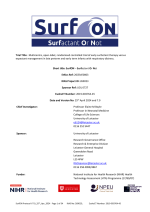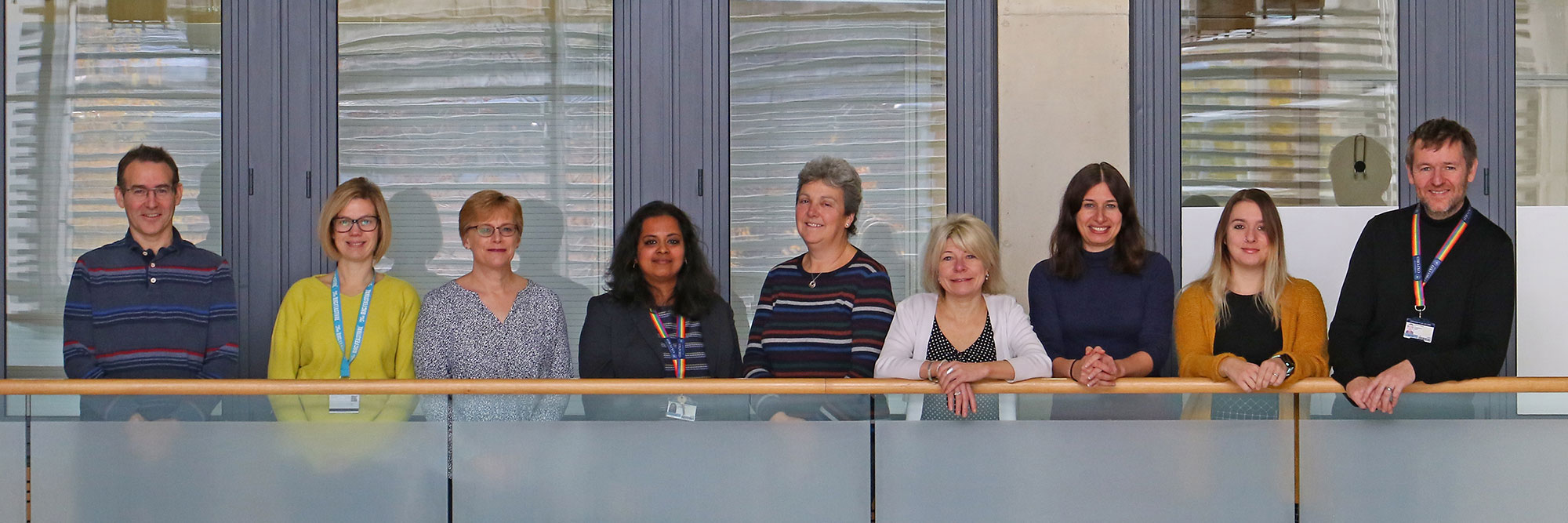Clinicians
This section includes information for clinical staff involved in the SurfON Study
Protocol
For full information about the SurfON trial please see the trial protocol below:
Background
Respiratory distress is common in Late Preterm (LP, 34+0–36+6 weeks of gestation) and Early Term (ET, 37+0–38+6 weeks of gestation) infants and childhood respiratory outcomes are worse than for full term infants. The commonest reason for neonatal unit (NNU) admission is respiratory distress syndrome due to surfactant deficiency. No evidence-based guidance exists for early respiratory management in this population and clinical practice varies widely. Many infants receive non-invasive respiratory support after birth. Some recover spontaneously but others go on to need mechanical ventilation and prolonged intensive care. It is difficult to predict which infants will deteriorate. Some clinicians use surfactant early to prevent respiratory deterioration; others choose to wait and give only if needed. The best strategy to prevent severe respiratory disease and reduce adverse long-term respiratory outcomes is not known.
Study Aim
To investigate whether, in LP and ET infants with respiratory distress, early use of surfactant versus expectant management results in shorter duration of hospital stay and reduced disease severity.
Study Population
Infants born between born between 34+0 and 38+6 weeks of gestation with respiratory distress and for whom a clinical decision has been made to provide non-invasive respiratory support.
Inclusion Criteria
- Born at 34+0– 38+6 weeks gestation
- ≤ 24 hours old
- Respiratory distress
- FiO2 ≥ 0.3 and < 0.45 needed to maintain SaO2 ≥ 92% , or
- FiO2 < 0.3, with clinically significant work of breathing
- Clinical decision to provide non-invasive respiratory support
- Written parental informed consent
Exclusion Criteria
- Major structural or chromosomal abnormality
- No realistic prospect of survival
- Prior intubation and/or surfactant administration
- Known or suspected hypoxic ischaemic encephalopathy
- Congenital abnormality of the upper or lower respiratory tract
- Known or suspected neuromuscular disorder
Study Arms
Infants will be randomised as soon as possible after consent using a 1:1 allocation ratio to either:
Early surfactant therapy
or
Expectant management
Investigational Medicinal Product
CUROSURF® (Chiesi Farmaceutici)
eMC link: https://www.medicines.org.uk/emc/product/6450/smpc
Primary Outcomes
- Length of infant's hospital stay after birth, defined as the number of days from birth to discharge home from hospital
- Incidence of severe respiratory failure, defined as:
- sustained (≥ 30 minutes) requirement for FiO2 ≥ 0.45 to maintain oxygen saturations (SaO2) ≥ 92%
Secondary Outcomes
Perinatal Clinical Outcomes
- Total duration of neonatal unit stay (defined according to HRG Critical Care categories 1-5, 2016)
- Total duration of neonatal intensive care support (defined according to HRG Critical Care categories 1-5, 2016)
- Duration of mechanical ventilation (via endotracheal tube)
- Duration of non-invasive respiratory support, using positive airway pressure or high flow
- Pulmonary air leaks, requiring insertion of a chest drain
- Days of mother-infant separation (defined using HRG Critical Care categories 1–5, 2016)
- Breast milk feeding (any breast milk feeding during neonatal hospital stay; any breast milk feeding at hospital discharge and exclusive breast milk feeding at hospital discharge)
- Late onset sepsis (microbiologically-confirmed or clinically suspected invasive infection more than 72 hours after birth)
- Need for inhaled nitric oxide (iNO) therapy
- Need for extra-corporeal membrane oxygenation (ECMO)
- Medical respiratory diagnoses
- Surfactant administration
- Maternal length of hospitalisation, defined as the total number of days spent by the mother in hospital after trial entry
Health Economics
- Cost of maternal hospitalisation
- Self-reported maternal health-related quality of life
- Costs associated with neonatal care
- Paediatric secondary care use and associated costs




